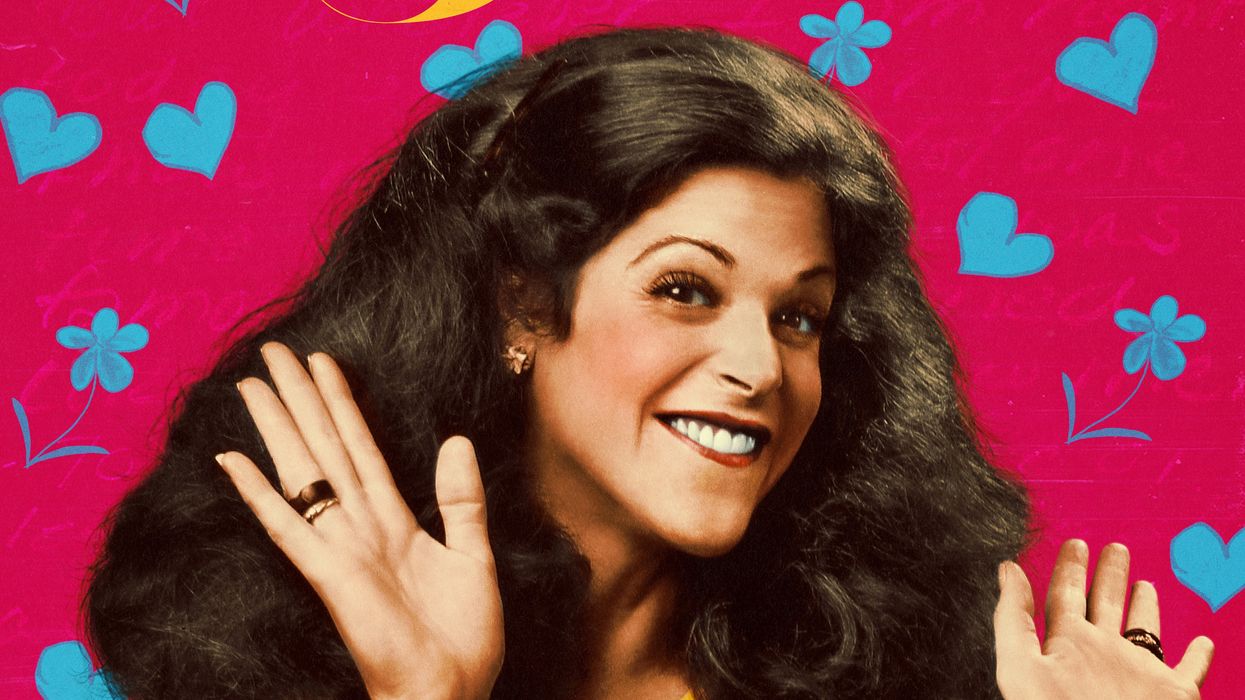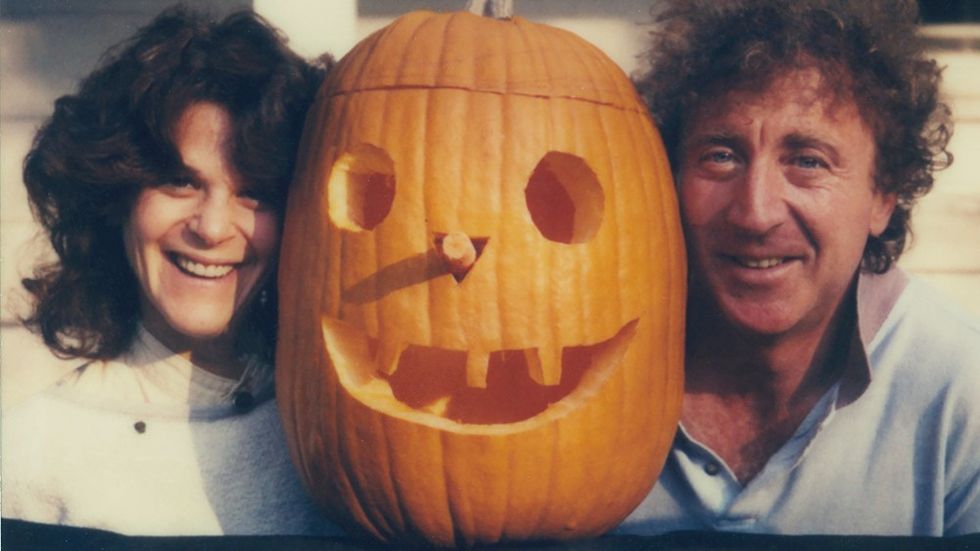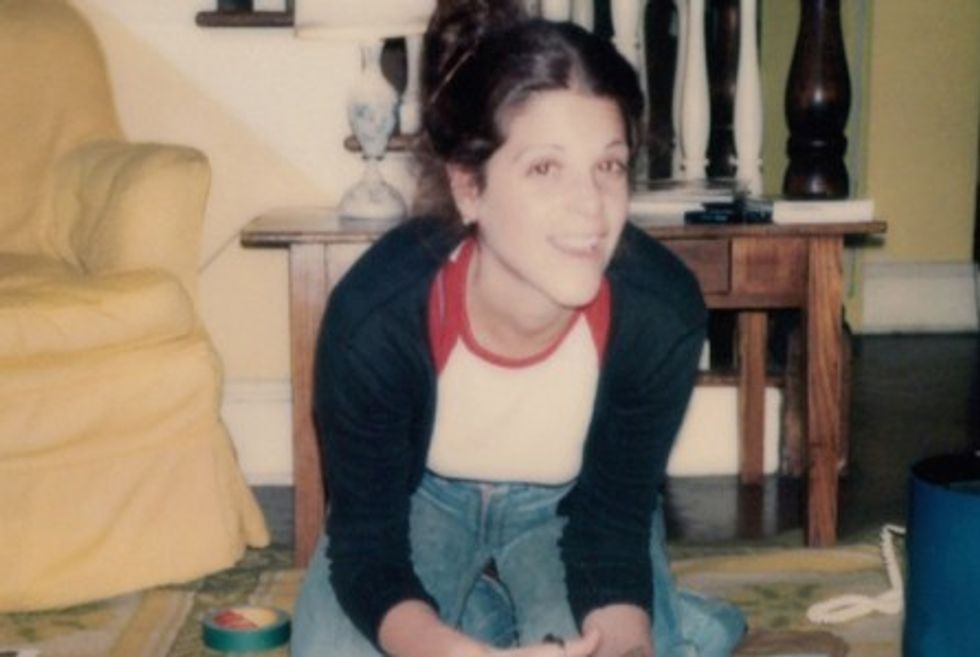'There Were So Many Times When It Didn't Seem Possible': 'Love, Gilda' Director on Seeing Your Documentary Through
The popular comedienne is the subject of a moving documentary about her prodigious life.

Lisa D'Apolito is the director of Love, Gilda, currently playing in over 50 cities across the United States. The documentary tells the story of Gilda Radner, legendary comedienne and the first person cast on Saturday Night Live. Featuring appearances from a who's who of current comedy stars, including Amy Poehler, Bill Hader, Maya Rudolph, and Melissa McCarthy, the doc also features an incredible cache of archival footage of comedy legends, including Bill Murray, John Belushi, and Gene Wilder. The film covers Radner's upbringing, heartbreaks, and lengthy battle with cancer.
A number of films claim to make you both laugh and cry. This one does as well, sometimes at the same time.
Full disclosure: years ago when I was a freelance editor and Lisa D'Apolito was head of production at an advertising agency, she used to hire me for a number of jobs. On the occasion of the release of her film, I sat down with her to discuss the four-and-a-half year process of making Love, Gilda.
Love, Gildais distributed by Magnolia Pictures and is now in theaters in 50 cities across the United States.
No Film School: You spent a long time working on Love, Gilda. How did making this film differ from your work in advertising?
Lisa D'Apolito: I think it's hard, in the filmmaking business, to find out how to do anything. It's very different than in the ad life. I didn't get any funding. I applied for all of these grants and won pitches. And then people would say, "Well, no one knows who Gilda Radner is anymore and no one knows who you are."
Even though I'd been producing for years, to industry types, I was a first-time filmmaker, and nobody wants to take a chance. It's been a really strange road.
NFS: How did you get started?
D'Apolito: You know how you say you want to make a film but you don't really think you're gonna make a film? When I was in advertising, we used to do fundraising videos for Gilda's Club...pro bono projects. Gilda's Club is an organization that provides support for cancer patients and their families, and I just fell in love with it. When I left my ad agency, I continued to do the videos for them.
I went to the head of Gilda's Club and said "I think I want to do a film," and she said, "Oh, I'll introduce you to Alan Zweibel," Gilda's writing partner. She introduced us via email on a Tuesday and Alan's like "Come over Thursday and you can film myself and Robin because we're going away for awhile."
I was so used to the old life in advertising: somebody wants to shoot something and you get a crew and you go. It was a three-hour interview and it was just so amazing. That was the beginning.
A few months later I interviewed Gilda's brother, Michael. I was still doing advertising work and I'm self-funding and asking people for favors. I then do an IndieGoGo campaign and raise $50,000 and make like a million fans of people who loved Gilda contributing to the campaign and people just saying, "I love her. I'm sorry I don't have money, but I'll help spread the word." So then you really have to make a film. You can't fake it.
I didn't go to film school. Little by little, I was doing advertising work and taking the money and putting it into the film. I didn't know how much this film would cost. I didn't know the resources, I didn't know the time. I didn't know any of that. It's very different from this corporate life where you have the money, you have the deadline, and it just kind of happens.
"The way Gilda wrote her book is that she sat down and she had somebody prompt her with questions and they recorded the sessions. I could hear Gilda talking, just talking."
NFS: What was your first breakthrough?
D'Apolito: I went to Detroit with Judy, one of Gilda's good friends, to meet with her brother and to go through some old storage. Michael had already given me Super-8 footage of the family, but I'd read Gilda's book, which deals with her cancer diagnosis and she mentions doing home videos from the hospital. He had the boxes in storage. It was overwhelming.
Judy went over to one of the boxes and pulled it right out. It was magical. The tape said, "Gilda's Ninth Chemotherapy Video." None of us had a VCR and so I got on a plane like I was guarding it. When I got home I put it in my VCR and I saw Gilda in her hospital gown. I took the tape right out, to get transferred right away.
I thought, "this is a game changer." Because instead of people talking about Gilda going through cancer, it was Gilda.
I said to Michael, "I saw a box of tapes and I wonder if those are the outtakes from when she recorded her audiobook." They turned out to be much more than that. The way Gilda wrote her book is that she sat down and she had somebody prompt her with questions and they recorded the sessions. I could hear Gilda talking, just talking.
I had already looked at all the network TV interviews and they didn't give you a sense of who Gilda was. She was very guarded, but the tapes were addictive. I had them transferred. Some of them had really bad quality, awful and hardly usable. My first editor David Cohen heard them, too, and we were like, "Oh my god. Gilda's talking to us!"
We worked for about a year going through those tapes and pulling out all our favorite things and categorizing them by subject. We put together a cut. We didn't have any of the celebrity interviews at this point but we started cutting.

NFS: What was the first edit like?
D'Apolito: The first assembly edit was with this audio and subtitles. All my filmmaker friends were like, "Oh this is great. The audience will be so forgiving because it's Gilda really talking to you." All my non-filmmaker friends were like, "Oh my god, I can't watch this. I don't want to read it. etc."
So then we found other interviews. And we had a pause. I didn't really know anyone in this field. And we're looking for new collaborators. Sometimes you get advice like, "this person's the best," but that doesn't mean they're the best person for your personality. People really did treat me like a first-time filmmaker. "you don't know this, you don't know that."
During this downtime, Gilda's brother Michael gave me access to her journals, which he was hesitant to do at first because they're so personal. One of the journals is from 1978, which is at the height of her fame. She was in the hospital for an eating disorder and she kept a daily journal and she still kept it up when she came out. That was a difficult part, figuring out how to tell that part of the story.
"From the beginning, I always wanted people inspired by Gilda to be a part of the film and it was really hard to get anybody."
NFS: How did you get the celebrity interviews?
D'Apolito: From the beginning, I always wanted people inspired by Gilda to be a part of the film and it was really hard to get anybody. I finally got Amy Poehler, who was really supportive, and after that, I got everybody within three weeks. It just takes the first person to say "yes."
Once I got the celebrities, David cut a really good trailer and I got into the Hot Docs Dealmaker program and had one-on-one interviews with PBS, CNN, HBO, A&E....everybody was interested. CNN then came in and gave me the money to finish the film. That's why I was able to hire a full-time editor, an assistant editor, a supervising editor, a photo retoucher, and an animator. At that point, we had all this stuff and it's like, "How are we really going to put this together?" That part took about seven months.
NFS: You worked with two different editors. How did that work?
D'Apolito: David really laid the foundation. He and I went through all the materials inside and out because it came over a period of time. We'd get new interviews and edit them in. We worked for two years on that, so that by the time Anne Alvergue came in, it was very organized. She's very analytical and cerebral, different than me, because I'm on the emotional side of things. It was the perfect partnership and she brought so much creativity to it.
NFS: You were working from your apartment 14 hours a day and your editor is an hour away in Beacon...What was your collaboration like?
D'Apolito: I would go up there once a week and we would talk all the time. It wasn't perfect, but I had so much work to do. There are 30 hours of interviews, 60 hours of audio tapes, five years of SNL...I don't think you need to sit in the edit room every day with an editor. I think you have to give the editor a lot of freedom. When Anne came in, there already was a rough assembly. I knew the material inside and out and so there was a lot in place.
I was always going for the emotional element of the film. Anne was looking for the "why" and the materials to substantiate that. That was the advantage of having someone new coming to work on the film.

NFS: Did you do test screenings?
D'Apolito: I always tested the film with filmmakers and non-filmmakers. I showed an early cut to another filmmaker who said that it was "hagiographic", and that really stayed with me. That's what we're used to in advertising, the promotional side of things, to paint your subject as a saint. It's a difficult trap to not fall into with Gilda because everybody loves her so much.
Once we had a real cut, we did a screening for about 100 people. My son brought college kids who'd never heard of Gilda before. CNN brought a bunch of well-known documentary people, etc., and we kept honing the cut over time as we screened it for different groups. At one point, the cancer section was so long that even my friends who love sad movies couldn't take it. We then we shortened it and, at the next test, people were like, "Wait, no, we really need to know more."
You can't listen to everybody, but when a majority of the audience feels a certain way you have to pay attention.
"If I read somewhere that Gilda was in New Orleans, I would go through all the newspapers, and if someone did an interview with her, I would try to contact the journalist and say, 'Do you still have the tape?'"
NFS: A lot of less experienced filmmakers would feel the need to put a nice little bow on every chapter in her life and you were able to make these leaps through periods of her life that give a great sense of momentum without shortchanging the story. Were there things that you really wanted to do as a filmmaker that took your collaborators awhile to understand? How did you end up getting those things to work in the film?
D'Apolito: Getting the audio of her voice to work was my number one, most adamant thing. There was nobody who really said, "this is going to work." the audio quality was so bad from some of the materials everybody said, "this isn't going to work." We kept digging and subsequently found other pieces. I spent a couple years tracking down anything I could find of Gilda. If I read somewhere that Gilda was in New Orleans, I would go through all the newspapers, and if someone did an interview with her, I would try to contact the journalist and say, "Do you still have the tape?"
Somebody wrote about Gilda for the University of Michigan newspaper and they still had the tape. We had to use parts of her audiobook because it had information and yet I hated the sound of it because she recorded it three weeks before she died and it was really stilted. When we got to postproduction, it was a mish-mash. The audio comes from about 20 different sources. During the downtime, it was really about weeding through the material and sending it off to audio houses for cleanup.
We arrived at a locked cut and got into audio post and three more weeks at Postworks. When I finally heard it, it was like, "Gilda's talking to me." Even when I see the movie now, it's like, "Oh my god, it worked!" That's what I'm most proud about, that she was able to tell her story because there were so many times when it didn't seem possible.
NFS: In the four-and-a-half years of making the film, was there a moment where things start clicking and you're like, "I got this"?
D'Apolito: I don't know. Maybe when the film was done? [laughs]. I was the archivist really. We hired people from time to time but I was searching and searching and there must be footage of her doing Second City, or there must be a picture of her surprise wedding; the to-do list was just really long....
It was fascinating. I miss making the film, even with all the super stress it entailed. It's just so much fun to go into somebody else's life and to discover them and to read their diaries, listen to their voice. Gilda's such an inspiration.I always thought it was the story of somebody looking to love and be loved.
It's addictive. You're watching her perform and listening to her mind, how she talks, how insightful she is, how she builds her characters. She's just this good, funny, emotional, funny, funny, funny person.
For more information about Love, Gilda or to purchase tickets visit the film's website.














